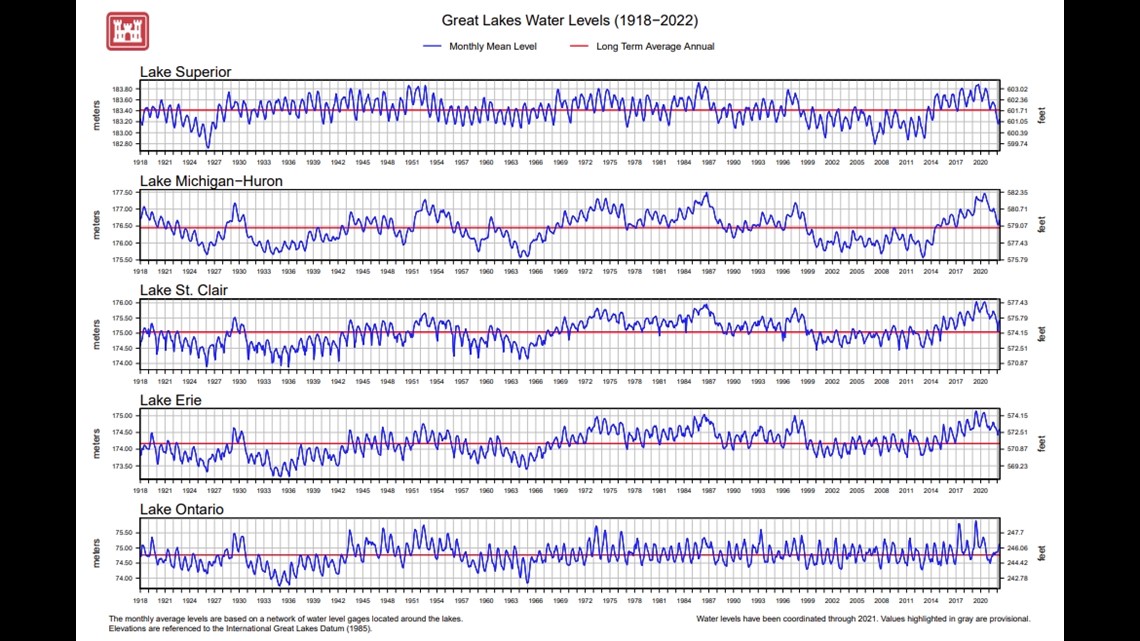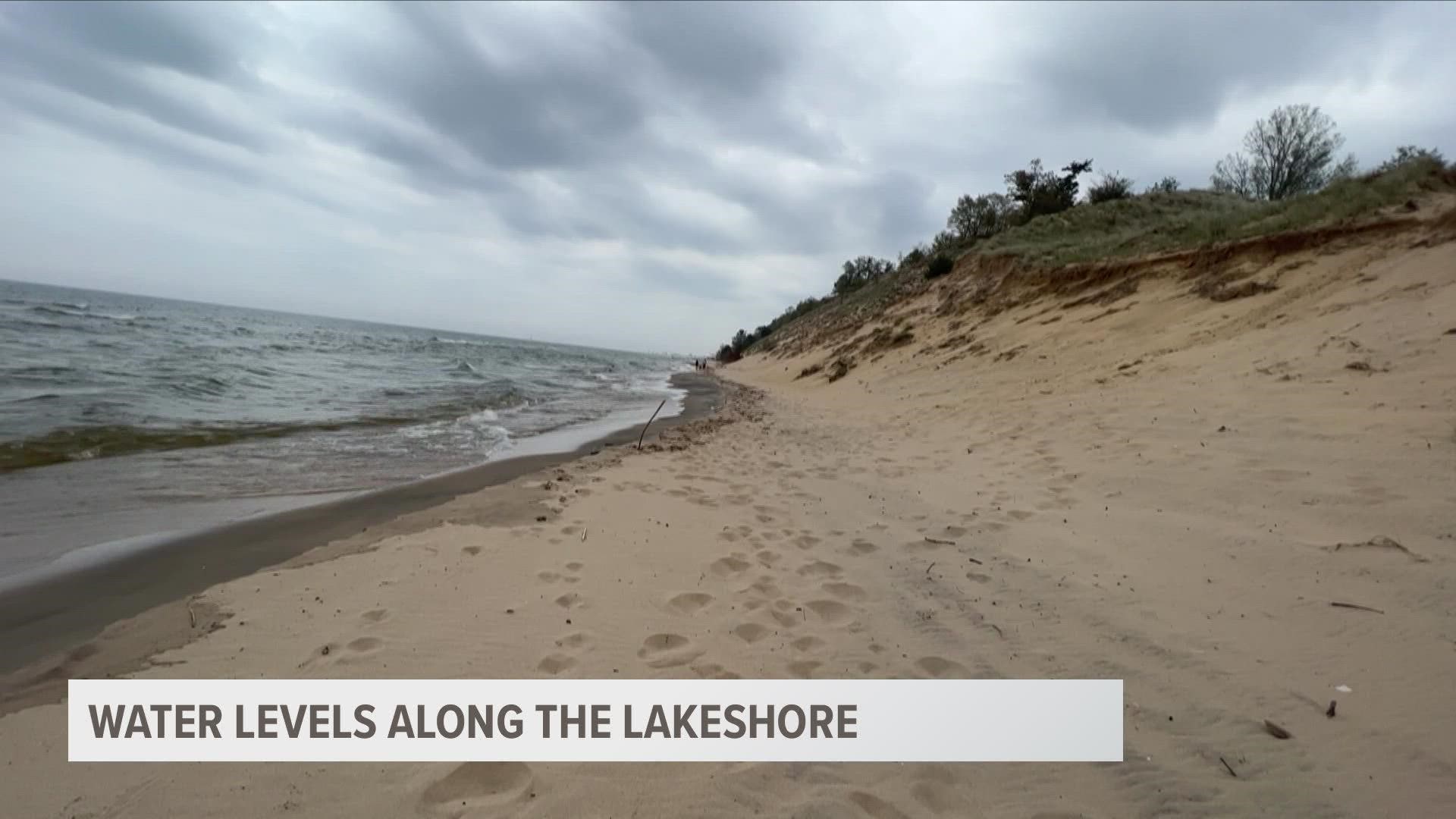MICHIGAN, USA — One of the largest water basins in the world, the Great Lakes are subject to variability. At the forefront of this variability: Water levels.
Two years ago, record high water levels battered the Great Lakes, causing unprecedented erosion and lakeshore communities to quickly react. While levels have tapered off since, the concern of future rises remains.
In its simplest form, levels are controlled by the net flux of water coming into the basin.
“It's essentially a balance between the water coming into the basin, which is of course precipitation, and that includes both liquid and solid, and then the water leaving the basin, which is evaporation,” says Dr. Jeff Andresen, who is the state climatologist for Michigan. “So we've got those two processes countering one another.”
Recently, however, the water balance has been drastic, with record low levels in 2013 to record high levels in 2020.
“We know historically that the level has actually fluctuated several feet for Lake Michigan over time,” Andresen notes. “But again, as we all know and appreciate the variability of that change, especially over the last decade has been something unusual.”


In the warmer, wetter climate the Great Lakes has experienced, the balance of water levels is being reshaped. Dr. Drew Gronewold, an associate professor at the University of Michigan School for Environment and Sustainability, explains what may be driving the recent extremes.
"And so what we believe is that in general, when you have these two competing forces on water, precipitation causing water levels to rise, evaporation causing water levels to go down... It’s as those two forces gain strength, as they increase in overall energy and magnitude, the dependency for water levels to slip from one extreme to the other goes up,” Gronewold says.
These extremes put pressure on the infrastructure along the lakeshore, especially residential areas.
“What I've seen, the residential community is not at a point where it is ready to handle being on the coastline or things on the order of 20-year design life for a home,” Gronewold says. “It seems to me that most of the residences that are built either on a sand dune or a low-lying area are experiencing flooding or some type of erosion problem at a very high frequency and not one that is conducive to long term sustainable design like for a home.”
While still above-average, water levels have receded since the record high extreme in 2020. This short-term relief is expected to continue based on the Army Corps of Engineers outlook for the remainder of 2022.
“Great Lakes wide, the outlook is for above average water levels for the most part. That outlook though does not bring record high water levels in play over the next six months with the water levels being below where they were a year ago,” says Keith Kompoltowicz, Chief of Watershed Hydrology for the Army Corps of Engineers in Detroit. “I would expect that most people would see a little bit larger beaches this year.”
Water levels of any kind, however, present potential issues on the lakeshore.
“It's important to understand that erosion is always happening,” Kompoltowicz explains. “So, you know, I still think there will be issues with some high-water impacts, but certainly not necessarily the devastating impacts that we saw when levels were at their record highs.”
More information on current water levels and forecasts can be found at the Army Corps of Engineers website.
►Make it easy to keep up to date with more stories like this. Download the 13 ON YOUR SIDE app now.
Have a news tip? Email news@13onyourside.com, visit our Facebook page or Twitter. Subscribe to our YouTube channel.

